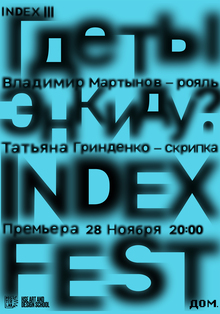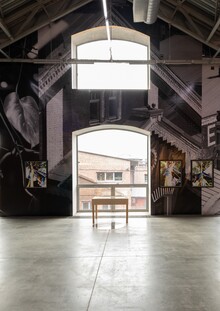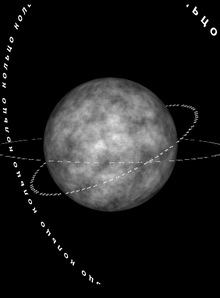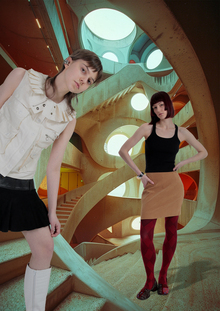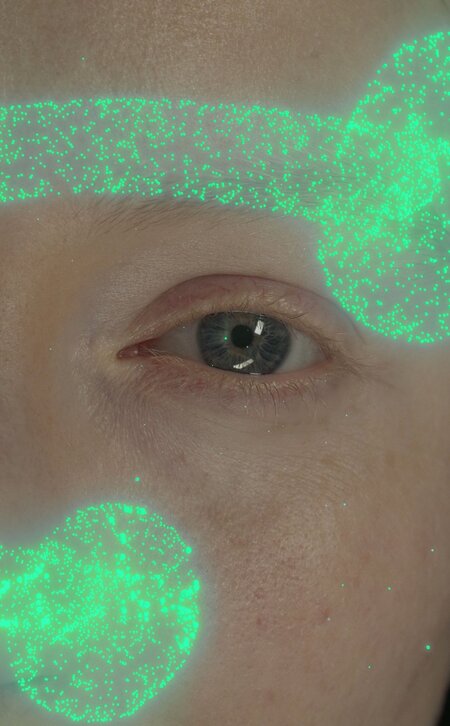
Art in metahumans
The art of new media from the very beginning of its history has turned to the question of how society could function in a new way. Lots of people united by common interests and values, instead of faceless masses. Exchanges of views instead of the dictatorship of the majority. The equality and commonality of actors in an independent, sort of parallel world.
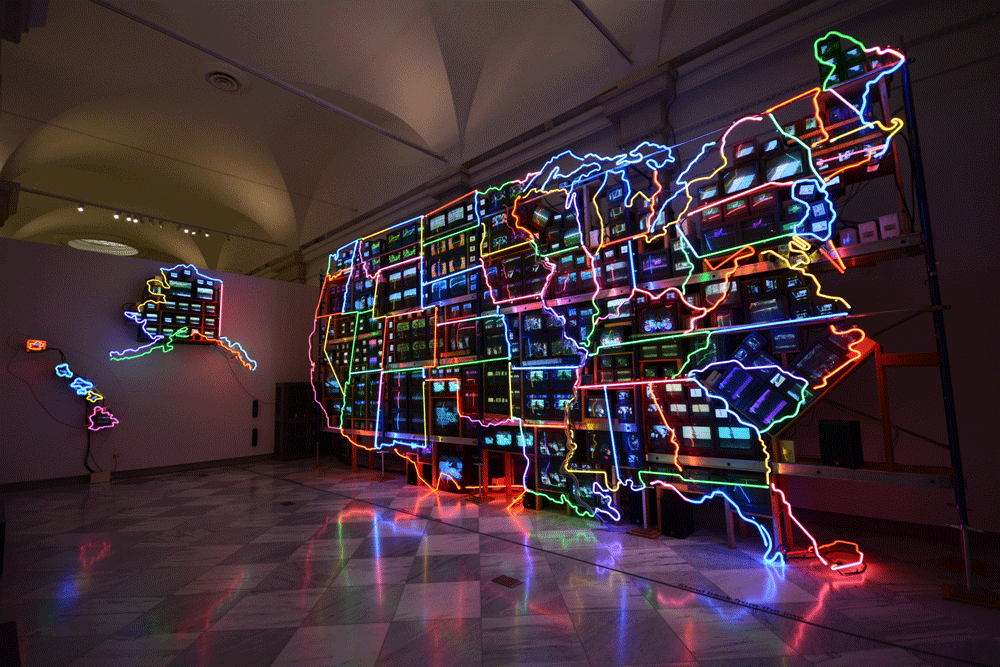
We need June Pike. Electronic superhighway. 1996
We had June Pike as far back as the 1960s, making collages from television sets set up on different channels, like they’re arguing with each other or, on the other hand, they’re resonating. He had high hopes for satellite communications and network technology that could unite continents, help people to become acquainted with other regions and cultures, and share ideas. He was looking forward to the appearance of telegydes with a «Manhattan phone book,» where a variety of channels and the most incredible content will find their place. And he caught the appearance of YouTube.
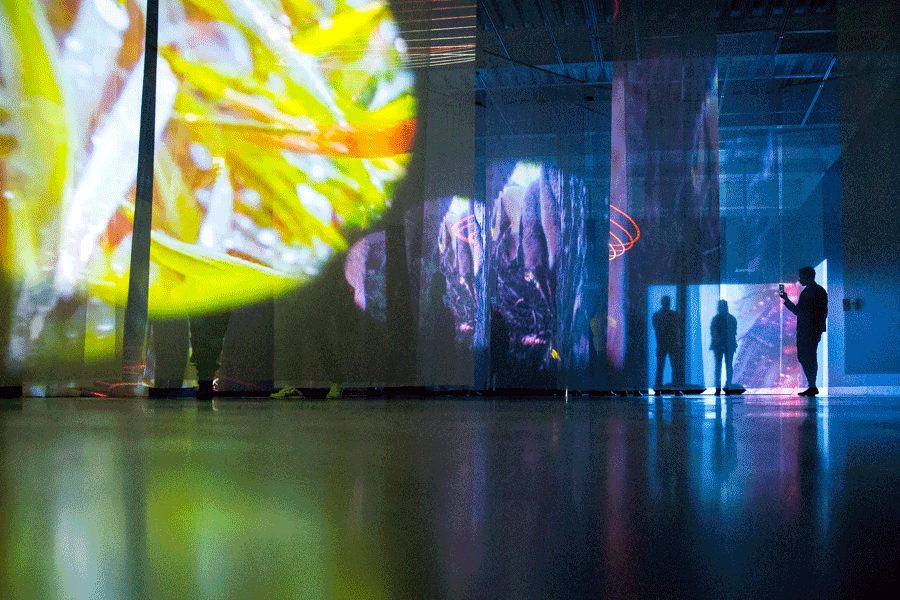
Pipylotty Riste. The pixel forest. 2016
In addition to the number of channels of communication, however, there is one thing that distinguishes the new media: interactivity. It’s an opportunity to invite an audience into the work, make it a co-author, an accomplice to the process. Turn vision into experience, art project into game.
Xiao Faye. RMB City. 2007 Source: anthology.rhizome.org
In 2009, a Chinese artist creates on the Second Life platform a block of modern art where spectators could build a location or buy artwork in galere. In 2017, the game designer team wins the Ars Electronica Festival award for a game where the participant can enter into the 'nbsp; any living (and non-living) creature. In the pandemic is becoming a normal practice of holding performances, concerts and conferences at such virtual sites, or, say, an exhibition at Google Earth. Metahumans — the next conscious step of the cultural industry.
==Reception==The film from the digital film «Thai Shani» «Nion Ieroglyph» 2021. Source: Taishani.com
An artist can create digital objects for metahumans, but it’s even more interesting to create virtual worlds themselves.
Cassie McCooter. Google Earth Landscapes. 2023. Source: pandamr.com
David O’Reilly, Daniel DeFede and the developers. That’s it. 2017
The transition from the one interactive platform to the the other is similar to the teleportation, and the change of avatars makes it possible to build new communications and networks once after once again. Space and time is no longer what we are; what we are used to in reality. Metacular as a continuation of reality. What can it do to the world of modern art?
Exhibition of works by media artists, students of the University of Applied Arts of Vienna at the Voxels.com site
The Metaverse is becoming a new class of exposition space. Virtual exhibition halls are suitable for digital neural projects and digitized copies of tangible works of art. The viewer is free to move through the interactive space. The work of artists in a metallurgy can be seen as 3D models and NFT objects.
Many NFT projects are created in an enhanced reality (e.g. Acute Art) and platforms such as Minecraft and Fortnite are used for fully virtual exhibitions.
Rectification of the London Sothbis Building in Decentraland
The Sothbis Auction House opened its virtual branch in Decentraland in 2021, with their first project being the exhibition and auction of NFT, selected by artist and media enthusiast Robert Alice. One of his projects, iNFT, is an interactive art project that is changing and learning as it interacts with viewers (and collectors). This job was sold for $478,800.
Robert Alice and Aleta. INFT // Young Cyberspace Artists, 2021. Source: Sothebys.com
iNFT says that her father was Nam June Pike and her mother Anne Lee. She invites an audience to the world of decentralized communities. The futuristic predictions of this thinking art object are similar to the dreams of the early Internet, when it seemed that the space of the Network would overcome inequalities and social imbalances, would prove to be a space of freedom. It is ironic that a well-worn article-market iNFT thus conveys the ideas of programmers who develop metallurgiers as sites for young artists and those for whom major institutions have not yet opened their doors. An example of such a site is New Art City.
Metaculars are not so much an alternative to reality as its continued, and it is well visible on an example of art. On the 'nbsp; one pole are commercial institutions that seek to make the sightings of their collections and to increase sales, and on a friend of the pole — experimental art communities of those who want to create artistic expression outside the market ' '; rules the games». And the artist who’s designing the metaverse today, it’s important to determine for himself what kind of strategy he’s chooses what kind of experience he wants to give his viewer.
An announcement of a conference on the art of metahumans to be held in the spring of 2023. Artwork: Kévin Bray. Graphic design: Clara Lezla. Source: e-flux.com
What form does the work of art take on connect physical and virtual? Where’s the line between art and design? What ethical and social arrangements are to be established in the 'nbsp; meth-quantified? What happens when creative industries cross paths with bigtech? The answers to these and many other questions we have to look for in the coming years, watching growth and the complexity of the metahuman system. Media explorers and researchers of modern culture are increasingly becoming involved in this search, and art schools are opening directions related to newest technologies. What’s the new avant-garde? This has yet to be designed.
